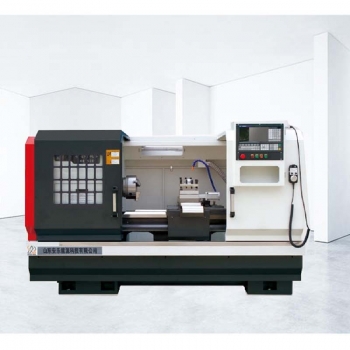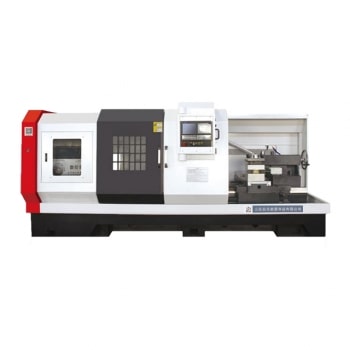ALCK5085D turning cnc lathe
CNC lathes are high-performance CNC products with complete functions, high proces.
ALCK6156E CNC Wheel Lathe Metal Machine Machining
ALCK6156E CNC Wheel Lathe Metal Machine Machine,Brand: ALLES CNC,China cnc wheel .
1. What is an automatic Swiss CNC lathe?
An automatic Swiss CNC lathe is a high-precision, high-efficiency automated machining equipment. Unlike traditional lathes, Swiss CNC lathes utilize a moving spindle and fixed tool design. Workpieces are supported by guide sleeves during machining, enabling high-precision, high-finish cutting of long, thin shafts and small, complex parts. These machines are typically equipped with a main and sub-spindle system, a powered tooling system, and C/Y-axis control. They can perform multiple processes, including turning, milling, drilling, tapping, boring, and grooving, in a single setup, significantly improving machining efficiency and precision consistency. Their automatic feeding system (bar feeder) enables unmanned, continuous machining, making them ideal for modern high-end manufacturing of small and medium-sized precision parts.
2. Main Application Industries:
1. Electronics and Communications Industries: Processing high-precision parts such as mobile phone connectors, fiber optic connectors, micro screws, copper pins, and pins.
2. Medical Device Industry: Produces microsurgical instruments, dental parts, needles, implants, precision stainless steel shafts, etc.
3. Automotive and Motorcycle Industry: Processes fuel injectors, sensor components, hydraulic valve cores, shafts, brake parts, etc.
4. Watch and Instrument Industry: Manufactures small, complex parts such as shaft cores, crowns, screws, precision gears, and pointer shafts.
5. Aerospace and Defense Industry: Processes precision sensor components, hydraulic connectors, and instrument components.
6. General Precision Parts Manufacturing: Automated batch processing of various slender, tiny, and high-precision parts.
Frequently Asked Questions (FAQs):
1. What is the difference between a Swiss-type lathe and a standard CNC lathe? Swiss lathes utilize a "spindle movement + guide bushing support" structure, effectively preventing vibration in long, slender workpieces. They are suitable for small-diameter, long, and high-precision parts. They offer fast processing speeds, high precision, and the ability to produce parts in one go. Conventional lathes have a highly rigid structure but are unsuitable for slender parts.
2. What materials can Swiss CNC lathes process? Carbon steel, stainless steel, copper, aluminum, titanium alloys, brass, and engineering plastics. They are particularly adept at machining small, precision parts made from high-strength and difficult-to-cut materials.
3. How to choose the right Swiss lathe? The following factors should be considered: Part diameter and length; whether a subspindle or live tooling is required; whether C/Y-axis multi-processing capabilities are required; automatic feeding and receiving system configuration; batch size and precision requirements.
4. What are the key maintenance points for Swiss lathes? Keep the guide bushing, spindle, and guideway clean; regularly change lubricating oil and coolant; inspect the feed system and tool wear; regularly calibrate the concentricity of the spindle and guide bushing; provide rust protection during extended downtime.

